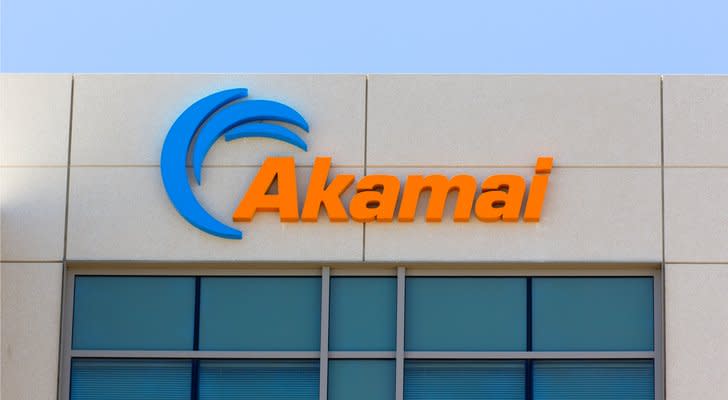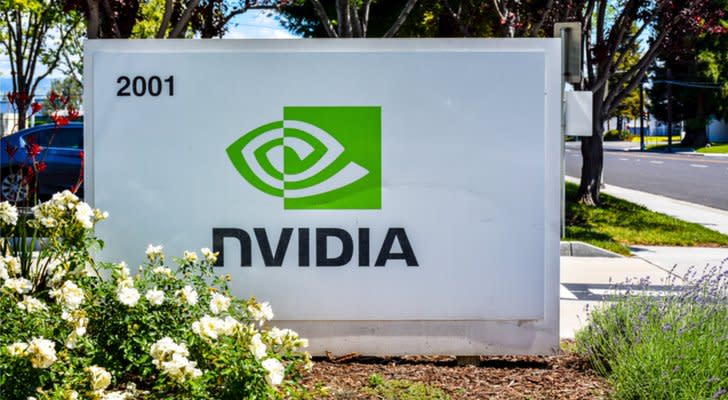The 7 Best Stocks in the Entrepreneur Index
In 2018, the S&P 500 Index had its worst year since the financial crisis, falling 6.2%. So far, it’s off to a better start in 2019, up 13% year-to-date. The Entrepreneur Index, however, is up 18% over the same timeframe. The index, created by Entrepreneur.com, is a collection of, you guessed it, companies started or led by entrepreneurs — comprised of 60 stocks to buy to imbue your portfolio with an entrepreneurial spirit.
After all, entrepreneurs are the athletes of our day. The CEOs of many of the following companies may not have the star power of, say, Steph Curry, but their rise to the top is certainly as remarkable. And the influence these companies wield is incredible.
But for every entrepreneurial-spirited startup, there are a dozen failed attempts. The path to unicorn status is littered with enough hooves to start a glue factory. Those who succeed have done so against all odds … and these entrepreneurs have made it their life’s mission to maximize the success of their companies.
InvestorPlace - Stock Market News, Stock Advice & Trading Tips
It’s this “killer instinct” characteristic that makes theirs such great stocks to buy. Even the entrepreneur CEOs that come across as docile automatons are more HAL 9000 than Johnny 5.
The following seven entrepreneur stocks all have amazing stories, and despite the current volatility you can count on them to grow well into 2019 and beyond.
[Editor’s Note: This article was originally published on Jan. 7, 2019. It has been updated to reflect changes in the market.]
Facebook (FB)
Source: Shutterstock
12-month upside: 16.6%
Mark Zuckerberg was just 19 when he launched “The Facebook” from the window of his Harvard dorm, or something along those lines. When it went public, Facebook (NASDAQ:FB) shares were priced at $38 per share. Today, FB stock is trading in the mid $100s. Keep in mind, FB stock plummeted 27.7% in 2018.
Facebook’s rout began with Cambridge Analytica — a massive data scandal that surfaced in early 2018 — and culminated in Mark Zuckerberg’s very own congressional hearing. He, uh, didn’t come off well. Facebook’s No. 2, Sheryl Sandberg, is also taking a lot of heat, but neither of them are going anywhere.
The decline of FB stock has curtailed plenty of investors. Which is fair enough — it’s an inauspicious time to get involved in high-fliers as a short-term trader. If you’re investing for the long-term, you shouldn’t have such qualms.
In the past month, 13 analysts have released buy ratings on FB, with only two hold ratings. Ivan Feinseth of Tigress Financial reiterated his “buy” rating, citing growing users and revenues. Feinseth sees the weakness in Facebook stock amid privacy concerns as a buying opportunity.
It doesn’t matter if you buy Facebook stock here or wait for it to completely bottom. The chances of missing the runup by attempting to time a recovery are greater than the chances of getting burned by holding FB stock for 5, 10 or 20 years.
Amazon (AMZN)
Source: Shutterstock
12-month upside: 16.5%
Jeff Bezos is now the world’s richest person, and he created that fortune all the while sticking by the company he founded in 1994. Bezos’ parents helped him start the company with a few hundred thousand dollars, and Amazon.com (NASDAQ:AMZN) was earning $20,000 a week within 30 days. Bezos could have settled, selling his company for millions and going off into the sunset, but he chose to let it ride. If that’s not a lesson to Shark Tank’s doe-eyed contestants, I don’t know what is.
When Amazon went public in 1997, it sold for $18. Today AMZN sells for $1,818. Where the S&P 500 lost 6.2% in 2018, Amazon’s stock price rose 26% and was our reader’s choice pick for the best stock of 2018 (and 2019). And there’s plenty of upside left. My colleague Will Ashworth believes Amazon stock could eventually hit $10,000:
“AMZN first hit $100 on Oct. 23, 2009. It took approximately 91 months to get to quadruple digits leaving investors wondering how long it will take for the Amazon stock price to hit quintuple digits.
In 2009, I’m sure nobody was thinking about $1,000. Yet, here we are in 2018, and the possibility of hitting $10,000 seems very real.”
Despite the broad market rout, analysts remain overwhelmingly bullish on AMZN, having doled out nine buy ratings in the past month. While Bezos’ Amazon has its fingers in multiple pies, it’s Amazon Web Services (AWS) that is powering future growth. Piper Jaffray’s Michael Olson recently reiterated a price target of $2,050, citing strong mindshare for AWS boosted by growing public cloud spending.
Tesla (TSLA)
Source: Shutterstock
12-month upside: 14%
Elon Musk may not have founded Tesla (NASDAQ:TSLA) — it was originally founded by Martin Eberhard and Marc Tarpenning — but he has transformed TSLA into what it is today. In 2010, Tesla stock went public at $17 per share. Since then it has gained 1,800%-plus, and it has also gained its share of enemies.
Noted Tesla bear Gordon Johnson of Vertical Research Group believes TSLA will lose 70% this year, dropping to a mere $88 per share. Johnson thinks Tesla has already reached the height of its business productivity. However, I tend to agree with InvestorPlace’s Will Ashworth, who countered a similar argument made by UBS analyst Colin Langan:
“While the analyst is right to assume that the regulatory credits that boosted Tesla’s results and Tesla stock in Q3 likely won’t be present in Q4, he’s wrong to think that Tesla’s earnings won’t be nearly as bright without them … With or without the credits, TSLA will continue to grow its business. Little by little, the company’s income statement and balance sheet will get healthier, and the issue surrounding the credits will disappear like all the other arguments against it.”
As for analyst coverage, it has been a hotbed of activity. Approximately 23 analysts have released revised outlooks on TSLA stock, leaning mostly negative: 10 sell ratings, five hold ratings and eight buy ratings.
TSLA stock has been yoyoing in 2019 after the company announced Q4 deliveries below consensus and a $2,000 price cut, among several other controversies related to CEO Elon Musk. Markets were concerned (perhaps overly so) that Tesla’s supply glut and price reduction suggests volume issues and would crimp margins. But Ben Kallo, an analyst from Baird, sees the price cut increasing Tesla’s addressable market:
“[W]e continue to believe demand concerns are overblown; we think the company has several levers to drive additional Model 3 sales, including shipping to international markets (expected in February), and introduction of leasing options/lower cost variants.”
Tesla Inc has plenty of rough terrain ahead, but it has weathered the storm so far, and Elon Musk won’t quit until Tesla succeeds.
Netflix (NFLX)
Source: Vivian D Nguyen via Flickr (Modified)
12-month upside: 6.6%
Like the Joker from the Batman comics, Netflix’s (NASDAQ:NFLX) origin isn’t clear. Originally, CEO and cofounder Reed Hastings claimed the idea for a DVD-by-mail service began when Blockbuster charged him $40 in late fees for Apollo 13. Cofounder Marc Randolph, however, says he and Hastings simply wanted to become “the Amazon.com of something.” The most recent origin story revolves around a math problem involving volume and distance traveled. Uh, sure. No matter how NFLX stock got its start, the rest of the story has been nothing short of awe-inspiring.
While it began its life offering DVDs by mail, Hastings, having the prescience to see the impact and opportunity of a wider-bandwidth internet, baked streaming video into Netflix’s core. The idea sounded ludicrous at the time. So much so that Blockbuster’s then-CEO John Antioco turned down an offer to buy Netflix for $50 million in 2000. Seven years later Netflix was able to deftly offer videos over the internet, swiftly ending Blockbuster’s reign on top.
But things haven’t always been so rosy. After its IPO, NFLX traded in a downtrend, falling to $4 from $15 per share. Netflix’s stock price recovered, but then came Qwikster — an attempt at rebranding its DVD business that failed spectacularly. Most recently, Netflix reported its first subscriber miss in more than a year, and NFLX was sent reeling amid mounting concerns of a global slowdown. But many believe Netflix remains a high-growth company with its best days still ahead.
That includes InvestorPlace’s Luke Lango, who sees Netflix stock reaching $600 over the next couple of years:
“The core fundamentals underlying Netflix stock remain rock solid. People are still cutting the cord in bulk. Streaming adoption rates are still growing rapidly and globally. Netflix is still the king of the streaming space, and that leadership position is only growing with better, more unique and more diverse original content. The value prop of NFLX is still compelling, and the company still has a ton of wiggle room to hike prices.”
Alphabet (GOOG, GOOGL)
Source: Shutterstock
12-month upside: 9.4%
At Stanford University circa 1995, a chance meeting between academics Sergey Brin and Larry Page would set them on a path to a trillion-dollar valuation. Initially named “Backrub,” the pair later settled on Google for their search engine, which later attracted Silicon Valley investors. Twenty years later, Alphabet Inc (NASDAQ:GOOG, NASDAQ:GOOGL) was born, while Google continues under the watchful eye of Sundar Pichai.
Since Google’s IPO in 2004 at $85 per share, GOOGL stock has gone on to sell for $1,078, and it’s only split its stock once. The story of Google is as successful a story as a business can have, but the company isn’t without failure. Google Glass, anyone? Google Plus, too, failed in spectacular fashion. Despite Google’s requirement that users sign in to all of its services through Plus, the social network just never caught on.
Part of what makes the company so great, however, is that it’s not afraid to fail. In fact, part of Google’s restructuring under the Alphabet Inc umbrella was due to the need to keep its core services in focus while still working on “moonshots,” such as Google Fiber, Verily, Calico, DeepMind, Waymo and others. Not all of these ventures will pay off, but that doesn’t matter.
Eventually, one (or more) of these ventures will catch the wind from a broader trend, sending GOOGL stock into the stratosphere. My colleague Laura Hoy wrote recently that Alphabet stock is one of the better stocks to buy regardless of what the market does:
“Alphabet is working on everything from healthcare projects seen extending people’s lives to autonomous cars and drone delivery services. If there’s a potential tech trend out there, Alphabet is working on it and that should be exciting for long-term investors who are looking for a safe bet that will carry them decades into the future.”
Analysts, too, remain strongly bullish on GOOGL, offering up 26 buy ratings in the past two months and only one hold.
Akamai (AKAM)
Source: Shutterstock
12-month upside: 9.6%
Akamai’s (NASDAQ:AKAM) story begins in 1995, where Tim Berners-Lee challenged his MIT colleagues to create a better way to deliver internet content. Current CEO Tom Leighton took up the challenge, inviting several co-workers to assist him in an idea. The technology that would eventually become a business known as Akamai wasn’t perfected until Danny Lewin helped Leighton develop an algorithm capable of solving the problem of web congestion. That occurred in 1996, and over the next few years, Leighton, Lewin and other MIT students launched the company.
Akamai stock went public in 1999, priced at $26 per share. At its peak, AKAM stock reached as high as $345.50 … then the dot-com crash happened. Akamai burnt through its cash reserves as sales tanked, and AKAM was delisted when its share price fell below $1. But Akamai survived. The company pivoted, diversifying its revenue stream from dot-coms to “the permanent economy,” attracting clients such as Sony Ericsson and even the U.S. Army.
Today, AKAM trades hands at $73.56, and over the next 12 months, analysts expect Akamai shares to hit $80.62 — a gain of 9.6%. Not too shabby for a company that returned from the brink of destruction.
We don’t cover Akamai a whole lot on its own, but that may change if the stock continues on its current pace. So far, AKAM has beaten earnings 12 times out of the past 13 quarters. The only time it didn’t was Q2 2016, where it only met the consensus. Nicolas Chahine, an InvestorPlace writer specializing in options trading, sees potential in the stock:
“The adoption of the cloud is bringing everything on the globe into the electronic arena, so the demand on services like AKAM is only going to increase. Those who are already suppliers have the first mover advantage for years to come.”
What’s more, Oppenheimer analyst Timothy Horan released a bullish “buy” rating on AKAM stock, setting his price target at $62.05 and noting strong growth in security. “We expect 1H19 to have better comps on stable hyperscale revenue,” said Horan, who also sees technologies such as blockchain and the Internet of Things (IoT) adding more long-term value.
Nvidia (NVDA)
Source: Shutterstock
12-month upside: 2.7%
Founded by Curtis Priem, Christopher Malachowsky and Jensen Huang, Nvidia (NASDAQ:NVDA) began its life in 1993. But Nvidia wouldn’t release its first product until two years later with the launch of NV1, sold under the name “Diamond Edge 3D.” It found its first major success with Sega, which was the leading arcade video game company at the time.
A series of successes followed, including Nvidia’s invention of the graphics processor unit (GPU) in 1999 with the Quadro GPU, which would become an industry standard. That same year, Nvidia filed for an initial public offering, pricing its shares at $19.69. And the rest, as they say, is history.
Since then, Nvidia has split its stock four times, and NVDA currently trades around $143. InvestorPlace’s Louis Navellier picked NVDA as his best stock for 2017, and it won! Navellier picked Nvidia again for 2018, but it didn’t do quite so well the next go around, losing 31% of its value.
But Nvidia has plenty of long-term growth left in its engine. Resident consumer and tech expert Luke Lango believes NVDA is in for a big 2019:
“[I]f 2018 was the year that ended the bull run in Nvidia stock, 2019 could be the year that brings it back.
In 2019, cloud and AI related growth will remain robust. Meanwhile, the crypto and trade war headwinds should pass. The overall growth trajectory should improve. Margins should track higher. Profit growth should remain robust.
All those operational tailwinds will converge on an Nvidia stock that is now trading at its lowest valuation in several years. This convergence will ultimately put Nvidia stock back on a winning path in 2019.”
And it looks like Lango’s analysis is already bearing fruit. During the 2019 Consumer Electronics Show (CES) presentation, Nvidia focused on gaming, announcing its RTX 2060, a new graphics card for $349. The reveal sent NVDA stock up 5.2%. Morgan Stanley analyst Joseph Moore is now more bullish than ever:
“The company launched the RTX 2060, bringing ray tracing to lower price points with a more powerful 52 TFlop processor, with 6 GB of GDDR6, basically in line with recent press commentary. The company talked about 40-60% performance improvement vs. the comparable 1060, with performance higher than the 1070ti, and said that the performance benefit would increase over time.”
With 19 buy ratings released on Nvidia stock in the past month alone, 2019 is looking like the year NVDA makes a return.
As of this writing, John Kilhefner did not hold a position in any of the aforementioned securities.
More From InvestorPlace
The post The 7 Best Stocks in the Entrepreneur Index appeared first on InvestorPlace.







